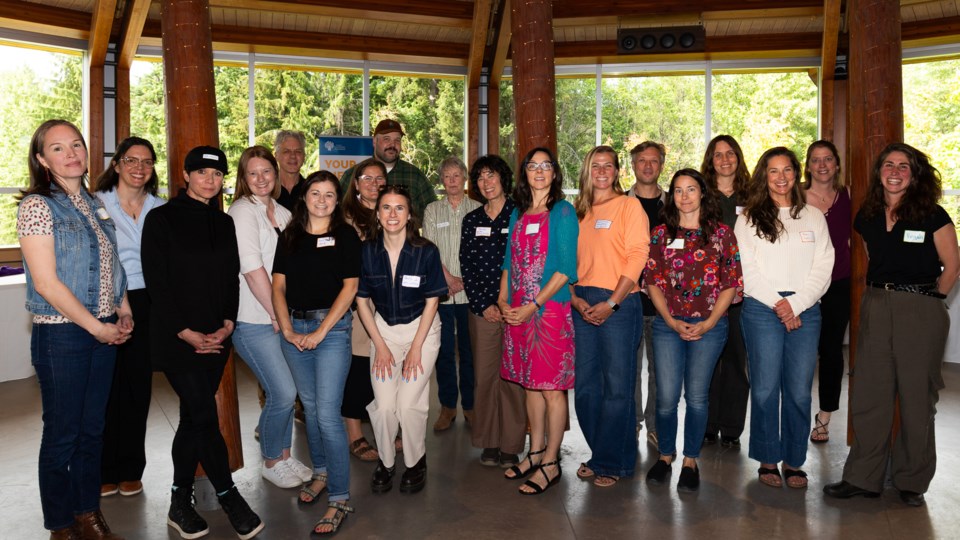The Whistler Community Foundation’s (WCF) 2024 Annual Report paints a picture of deepening community impact, with more than $540,000 granted to local charities and initiatives this past year.
From housing and health-care to youth programs and environmental work, the foundation continues to play a pivotal role in supporting Whistler’s non-profit sector.
“We’re just really there trying to support the community—and we’re supporting the charities to support the community,” said the WCF CEO Claire Moses.
In 2024, the organization received $808,973 in donations. Among its many initiatives, the foundation continued its work on Vital Signs, a project that combines data analysis and community dialogue to track Whistler’s well-being.
A community snapshot
Last published in 2023, Vital Signs reports aim to answer questions like, “Do we have a sustainable future?”, “Is our community livable?”, and “Is everyone thriving?” The report uses data from Statistics Canada, the Resort Municipality of Whistler and non-profits to get a clearer look at the overall level of social well-being in town.
The WCF also hosts community conversations to dig deeper into the numbers.
In 2024, Whistler’s living wage was calculated at $28.09 per hour by Living Wage BC and the Canadian Centre for Policy Alternatives. For families, monthly living expenses were estimated at $7,915, with housing alone consuming $3,056—or nearly 40 per cent.
That’s well above the affordability threshold of 30 per cent of gross income, long used as a housing benchmark.
“When you look at the Vital Signs report and look at the average wages and the jobs that are available, it shows that not everyone's making a livable wages,” Moses said.
Building relationships through connection
To further highlight its work and impact, the WCF hosted a new-format community event in June, bringing together grantees, donors, and residents.
“This is the first time we’ve done an event like this,” said Moses. “It was a great networking opportunity—for charities to connect with donors, but also with each other.”
Instead of a formal presentation or panel discussion, attendees were invited to drop in and speak directly with representatives from the more than 40 organizations that received Foundation support last year.
“We got a lot of feedback from attendees that they really liked the flexibility,” she added. “It was a chance to build deeper relationships.”
Flexible funding fills a critical gap
Many grants focused on operational support—a need often overlooked by traditional funders.
“The biggest line item in any charity’s budget is the people, because it’s the people doing the work,” said Moses. “We offer flexible funding that they are able to use to best suit their needs at the time.”
That support included funding for Whistler Community Services’ counselling assistance program, which saw a 90-per-cent increase in demand between 2023 and 2024. The program provides low-cost mental health services to residents without extended health coverage.
Other 2024 grants supported school garden programs like Healthy Eating, Healthy Pastimes at Myrtle Philip Community School, invasive species work by Lil’wat and N’Quatqua Nations, and neighbourhood initiatives like Cheakamus’ Halloween decorating fund through the Small Neighbourhood Grants program.
A growing model for long-term impact
The Foundation also continues to grow its endowment fund model, offering long-term financial security to local charities.
“We’re seeing more organizations fundraise into their own endowment funds,” said the executive director. “Once they make a donation, it sits in the fund, it grows, and it continues to grant every year.”
Donors can contribute to these charity-held funds directly—sometimes as a tribute, such as on a birthday—instead of giving a gift.
“There’s no grant writing involved. It’s just an automatic five-per-cent disbursement each spring,” Moses highlighted.
Looking ahead
As the Foundation enters its 26th year, it’s reflecting on key moments that shaped its direction. One of the most impactful was the early establishment of the Environmental Legacy Fund, created in partnership with the Resort Municipality of Whistler.
“It’s our largest and one of our oldest funds. It allows us to grant the most overall each year and really speaks to this community’s priorities.”
With philanthropy often happening behind the scenes, the Foundation wants to encourage more residents to show up, learn, and connect.
“Endowment might seem like a big word, but really, we’re just trying to support the people who are doing the work,” said the executive director. “My call to action would be: get involved and come to these events. Everyone’s welcome.”




